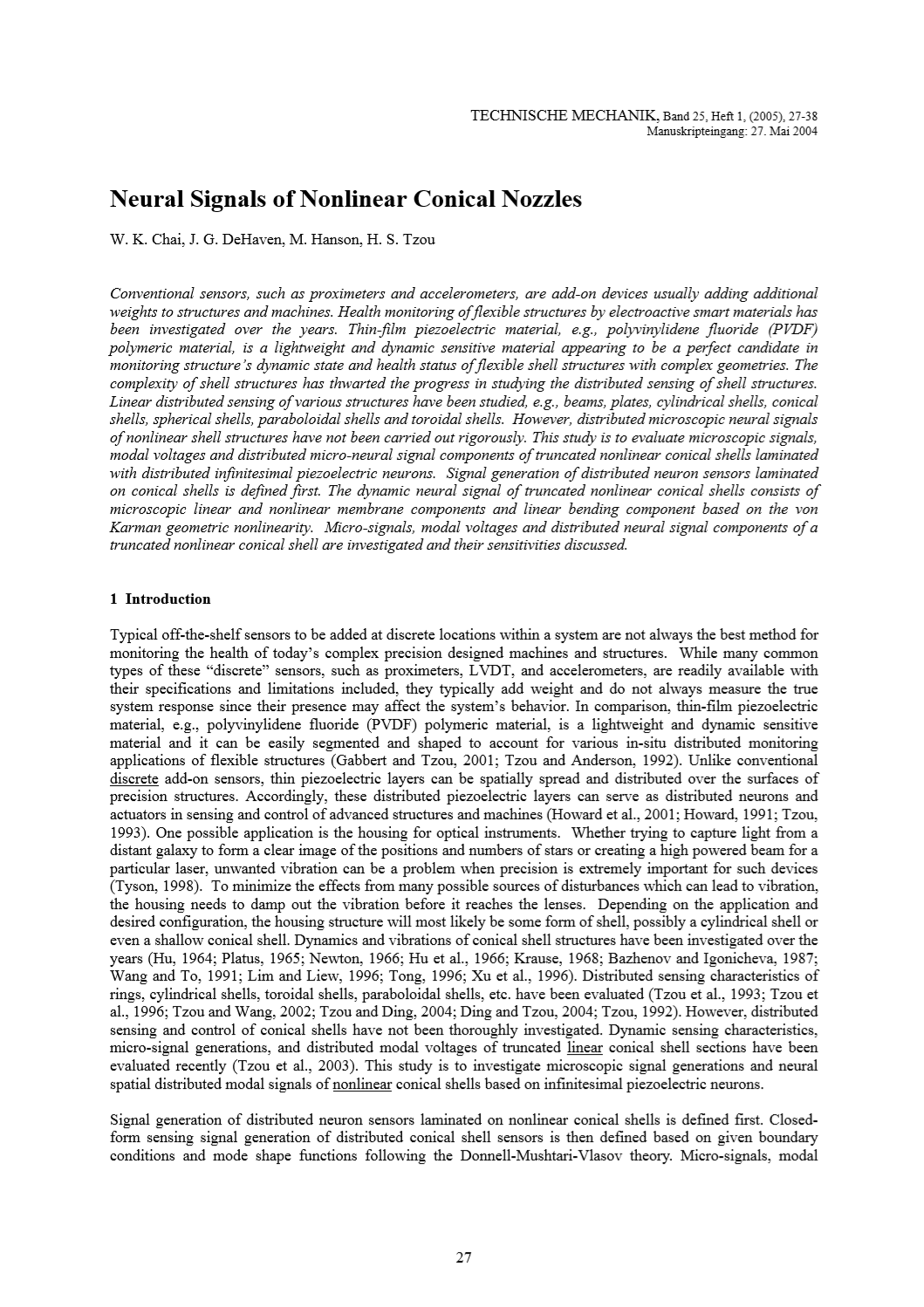Neural Signals of Nonlinear Conical Nozzles
Abstract
Conventional sensors, such as proximeters and accelerometers, are add-on devices usually adding additional weights to structures and machines. Health monitoring of flexible structures by electroactive smart materials has been investigated over the years. Thin-film piezoelectric material, e.g., polyvinylidene fluoride (PVDF) polymeric material, is a lightweight and dynamic sensitive material appearing to be a perfect candidate in monitoring structure’s dynamic state and health status of flexible shell structures with complex geometries. The complexity of shell structures has thwarted the progress in studying the distributed sensing of shell structures. Linear distributed sensing of various structures have been studied, e.g., beams, plates, cylindrical shells, conical shells, spherical shells, paraboloidal shells and toroidal shells. However, distributed microscopic neural signals of nonlinear shell structures have not been carried out rigorously. This study is to evaluate microscopic signals, modal voltages and distributed micro-neural signal components of truncated nonlinear conical shells laminated with distributed infinitesimal piezoelectric neurons. Signal generation of distributed neuron sensors laminated on conical shells is defined first. The dynamic neural signal of truncated nonlinear conical shells consists of microscopic linear and nonlinear membrane components and linear bending component based on the von Karman geometric nonlinearity. Micro-signals, modal voltages and distributed neural signal components of a truncated nonlinear conical shell are investigated and their sensitivities discussed.





